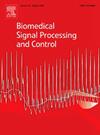DIO-REGNET:利用Dingo优化的深度Reg网络检测黄斑水肿
IF 4.9
2区 医学
Q1 ENGINEERING, BIOMEDICAL
引用次数: 0
摘要
黄斑水肿(ME)是视觉视网膜疾病患者失明和视力丧失的主要原因。深度学习(DL)算法在训练过程中受益于广泛和多样化的数据集,但获得足够数量的黄斑水肿标记数据是具有挑战性的。数据集不足可能导致过拟合,降低网络泛化不同情况的能力。利用光学相干断层扫描(OCT)框架解决糖尿病性黄斑水肿(DME)问题。由于这种情况的复杂性和富裕国家医疗保健的饱和,它是导致失明的主要因素之一。本文提出了一种利用深度学习技术对ME进行早期识别的新型DIO-RegNet。输入的OCT图像经过高斯自适应双边滤波器预处理,以提高图像质量。将无噪声图像输入到改进的DeepLabV3 +中,对视网膜图像中的黄斑区域进行分割。然后,将分割后的黄斑区域输入到基于深度学习的RegNet中提取结构特征。最后,应用Dingo Optimization (DIO)算法对黄斑水肿病例进行特征选择和分类。提出的DIO-RegNet对黄斑水肿的检测准确率达到99.44%。与Dense Net、Alex Net和ResNet相比,RegNet的准确率分别为96.72%、92.89%和97.11%。与CNN、更快的R-CNN和VGG-16 CNN相比,DIO-RegNet的整体准确率分别提高了2.44%、5.04%和4.34%。本文章由计算机程序翻译,如有差异,请以英文原文为准。
DIO-REGNET: Macular edema detection using Dingo optimized deep Reg network
Macular edema (ME) is a primary cause of blindness and loss of vision in people with visual retinal disorders. Deep learning (DL) algorithms benefit significantly from extensive and diverse datasets during training, but obtaining a sufficient amount of labeled data for macular edema is challenging. An insufficient dataset may result in overfitting, reducing the network’s capability to generalize the diverse cases. An optical coherence tomography (OCT) framework is utilized to solve the problem of diabetic macular edema (DME). Due to the complex nature of this condition and the saturation of healthcare in affluent nations, it is among the main factors that induce blindness. In this paper, a novel DIO-RegNet was introduced for the early recognition of the ME using DL techniques. The input OCT images are pre-processed by a Gaussian adaptive bilateral filter to enhance the image quality. The noise-free images are fed to the Modified DeepLabV3 + to segment the Macular area in retinal images. Then, the segmented Macular region is fed into deep learning-based RegNet for extracting the structural feature. Finally, the Dingo Optimization (DIO) algorithm is applied for the feature selection and classify the cases of macular edema. The proposed DIO-RegNet achieves a detection accuracy of 99.44 % for macular edema. Compared to Dense Net, Alex Net, and ResNet, RegNet achieves an accuracy rate of 96.72 %, 92.89 %, and 97.11 %, respectively. The DIO-RegNet improves overall accuracy by 2.44 %, 5.04 %, and 4.34 % over CNN, faster R-CNN, and VGG-16 CNN, respectively.
求助全文
通过发布文献求助,成功后即可免费获取论文全文。
去求助
来源期刊

Biomedical Signal Processing and Control
工程技术-工程:生物医学
CiteScore
9.80
自引率
13.70%
发文量
822
审稿时长
4 months
期刊介绍:
Biomedical Signal Processing and Control aims to provide a cross-disciplinary international forum for the interchange of information on research in the measurement and analysis of signals and images in clinical medicine and the biological sciences. Emphasis is placed on contributions dealing with the practical, applications-led research on the use of methods and devices in clinical diagnosis, patient monitoring and management.
Biomedical Signal Processing and Control reflects the main areas in which these methods are being used and developed at the interface of both engineering and clinical science. The scope of the journal is defined to include relevant review papers, technical notes, short communications and letters. Tutorial papers and special issues will also be published.
 求助内容:
求助内容: 应助结果提醒方式:
应助结果提醒方式:


